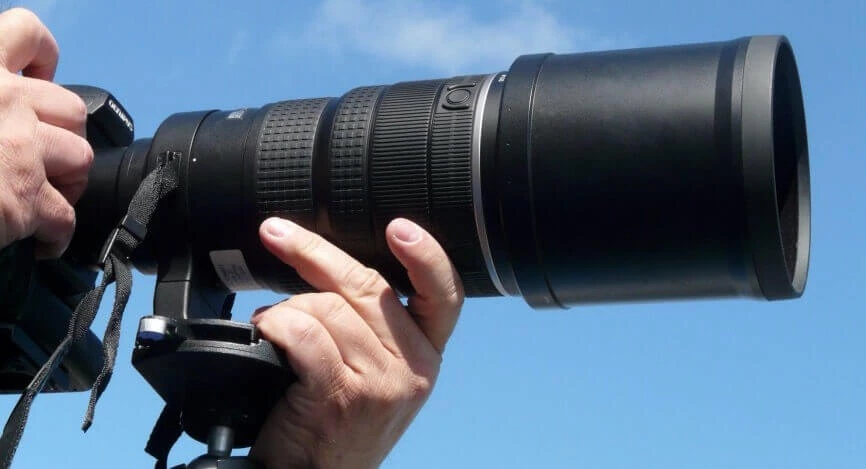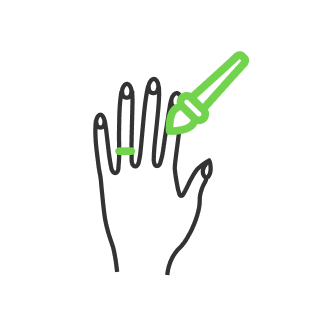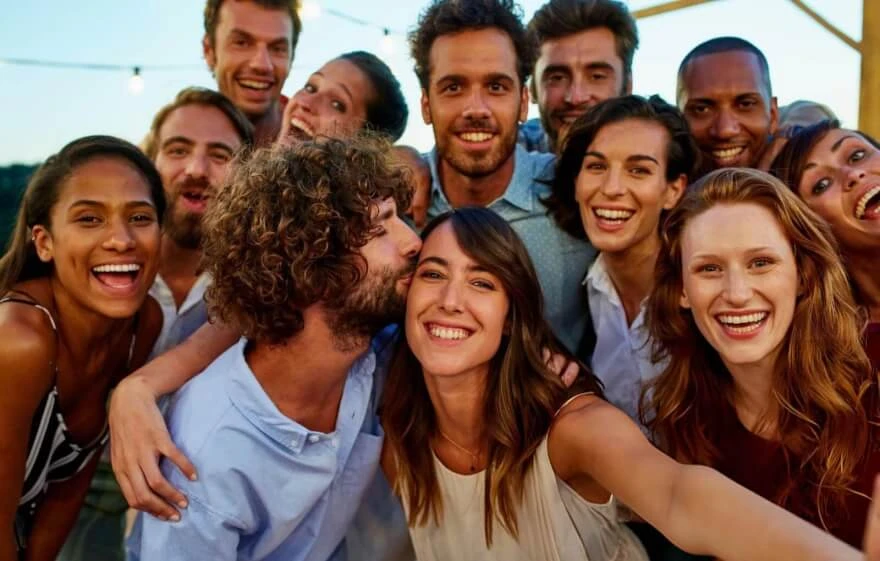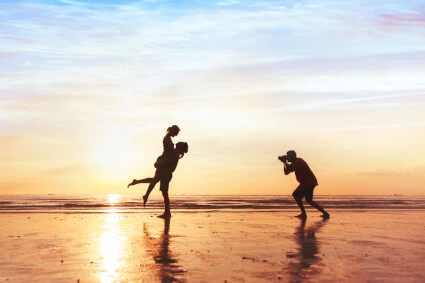Tips for Telephoto Photography

- What is telephoto photography?
- Get a tripod
- Create amazing bokeh
- Portrait telephoto lens photography
- Telephoto lens for wildlife photography
- Telephoto lens for landscape photography
- Make it storytelling
- Looking for relations in the frame
- Looking for the depth
- Lens Interaction with the light
When you see someone with a DSLR and a huge lens, you form the opinion that the bigger the lens, the better it is. There are actually three types of lenses: Wide-angle lenses, normal lenses (50mm standard), and telephoto lenses with a narrow frame width. Telephoto lens in photography is often used for macro and portraits, but there is much more variety in use.
What is telephoto photography?
So basically having a telescopic lens opens up opportunities to use it to your advantage. Advantages have a certain variety, but the main goal is to use your lens’s range capabilities, which is basically telephoto lens definition photography. Therefore, you can make outstanding portraits, shoot wildlife from the range in the field, improve your street photography with some bokeh. In today’s topic, we are not going to discuss the settings such as shutter speeds or the aperture settings because they are variable to different shooting conditions. We are going to give actual tips to excel in telephoto lens photography and even more.
Get a tripod
Telephoto lenses have a long focal length, and they are quite heavy. In this regard, it is recommended to use a tripod to avoid blurring frames during your shots, because the greater the distance from the object, the stronger any shaking will be reflected in the frame, which is only facilitated by the weight of the lens itself. The tripod allows you to create steady shots and prevents your frame from any shake.
Create amazing bokeh
The fact that you have the long lens actually brings the background forward, which also brings all the sources of lights that are in the background closer, and they look bigger. Once you are focusing on an element that is at the front when the background is getting blurred out – that is what we call the bokeh effect. The awesome part of that is that with long lenses you get an outstanding bokeh effect, it gets super smooth and buttery. Therefore, if you are at a place where you actually think it is very boring or there is nothing to shoot or the weather is bad, just wait until the nighttime comes and go shoot. Even if it is raining, you can have an amazing shot! That is something that anyone who has ever been bored by a city can do, and at the night you will see it is going to transform your telephoto street photography quality.

Portrait telephoto lens photography
The main goal of making portrait photos with a telephoto lens is to avoid distortion of the photographed person, and you will also get a good background behind. The background will reach the bokeh effect eventually, which is good for the portrait, making only necessary parts of the frame stays in focus. Here is an incredible shot that was done with an 85 mm lens.

You can also do some “undercover” shots, but do not abuse this power, because there is one step from being a true photographer to becoming a creeper.

Therefore, as a rule, the best narrative portraits are obtained when the person does not know at all that he is being photographed, which takes the character of the picture to another level.
Telephoto lens for wildlife photography
If you enjoy shooting wildlife, then you will get to know that the range matters the most for that occasion. It is very hard to make a good close-up shot without bothering the wildlife. Thus, lenses with a specific focal length literally make you a “photo-sniper” which allows you to shoot wildlife without being spotted and make some storytelling shots of nature.

You can also use a telephoto lens for bird photography which is high up in the sky considering the lens’s zooming capabilities.
Telephoto lens for landscape photography
If you are not a wildlife photo enthusiast and prefer more stable shots of the landscapes, and you would like to improve in that particular, we are going to break down some tips for super telephoto lens photography with examples of outstanding storytelling landscape shots.
Most of the time landscape photographs are very simple and flat, to add some spice we need to make them a bit of storytelling. In order to be effective, any story has to do at least three things:
- Establish the environment of the story
- Emphasize storytelling moments
- Show the details about the place and a character within
From a photographic point of view, this means that if you have a collective image, it is important to convey the meaning of the whole picture to the viewer.

In fact, you need to emphasize the unique parts of the photo in which the story of a particular location actually takes place.
The importance of this is that as an avid photographer, you will run into the problem of lack of ideas in your everyday photos and will simply need to look deeper into the frame to allow it to have a claim to uniqueness. Shooting with a telephoto lens above 50 mm is a great way to capture that narrative with the right approach.
Here is a list of four simple tips that are going to help you improve your telephoto landscape photos.
- Outstanding subject
- Convincing composition
- Smart and artistic camera tech
- Appropriate lighting
Having all this in stock practically gives you a guarantee of great pictures!
Let's pick one tip for each of them.
The first tip will help you find the subject and story in the frame.
When shooting with a telephoto lens, it is recommended to not look at the picture as a whole, but instead, start looking at the areas in the frame that will emphasize what is happening in the photo and what is hidden from the bare eye. If you manage to show these areas in your photo, you can add some mystery to the scene.
Make it storytelling
Here are some good comparison telephoto lens photography examples for that particular.

This is an example of a photo taken with a wide-angle lens on a rather gray day. As you can see from the photo, there is not even a hint of any color or light seeping through the clouds. In this case, you can say "Bad day for photography, back home!" But if you would look closely, you can see that far in the background the clouds gently envelop the top of the hill, and you just need to overcome this distance to emphasize the beauty of this event in the frame. This is where the telephoto zoom will help us. Focusing on a certain area will cut off all the unnecessary, as the sculptor does with a sculpture.

That way, we are able to create a much more fascinating photograph.
Here is another good example. The shot was taken in northern Italy.

We see a scene with a hill under fluffy clouds that are reflected on the smooth surface of the water. The photo is not bad, but there is no mystery in it. Or is it still there? If we look closely at the reflection in the lake, we notice that it does not quite match what is reflected in the background. This is a geometric illusion that we can use to turn a photo into something unique and questionable. We zoom in the transition of the lake into the background and turn a photo into a different look. That is called a juxtaposition use that appears like a sort of relation between subject and object which creates a different perspective. Zoom helps to reach it out with an uncertainty of the event. A viewer would wonder about what is going on in that frame, which makes it more engaging than the original capture.

An image that engages the viewer into it.
Looking for relations in the frame
As a grand total of being said, we can define a good tip for composition: The juxtapositions have a good use for making a visual tension. The idea is very simple, but very powerful at the same time. All you need is to look for the things in your scene that sorta relate to each other at some point or have cohesion together and then just take the right angle making those things appear opposite and diagonal within the frame like in the examples below

Here you can see the relation between two mountains, one with the snow and another diagonally opposite with the trees on it.
In case you are tired of mountains, here is a good example of a telephoto lens for moon photography and eclipse that has been taken in the Emirates

It has a sort of relationship between the eclipse and the person standing on the sand with his camel. Same idea, diagonal-opposite placement in the frame with a kind of story within that can force your fantasy.
Looking for the depth
You need a creative approach to be able to add some depth to your photo using a telephoto lens. It is pretty tricky due to the fact that the common way of adding depth to landscape photography is by using a wide-angle lens. Then you need to get closer to the foreground, which brings it right up to the viewer. Most of the time shooting with a telephoto you can not afford that, the foreground is out of sight, thus your photos end up having no idea or the story behind it. To avoid that, we can use layering. Layering as the term means that you have some elements that repeat in the scene and fade off within the distance in the frame, or in cases when you very deliberately use certain layers within the photograph, like in the example below.

As you can see, here we have these trees consistently layered within bushes, repeating, which creates depth in the scene. The photo was shot with an 86 mm lens.
We can also use layering by playing with different planes of the image

The shot was taken with a 200 mm lens, which usually makes those kinds of shots pretty flat.
But as you can see in that particular example we have a person in the foreground and the background miles away provides layering.
Lens Interaction with the light
Do not be afraid of shooting indirect light using telephoto lens for landscape photography. Oftentimes using this type of lens, you operate with a smaller scale of the landscape and the light tends to transition more gradually. We can use that knowledge to do outstanding shots like this

In that shot, we are working with a small section of the waterfall that is lit by the sun coming from the clear sky. The fact that the lens gradually feathers a direct light, making it look like this dramatic, brings the lens into more fascinating use.
Probably the best time to get outstanding shots is the hour after sunrise and the hour before sunset. The reason for that is you still tend to get that nice low angle of light that makes the landscape view look wonderful. The light itself interacts with a surface of the landscape in a really unusual way which you can not afford with another lens type.

Here is another good example, you may not believe that there is no post-processing, just a clear shot looks like a fairy tale with a telephoto lens usage.

Here is like an hour and a half after sunrise. Sun shining through the dust that was blowing through this grove of trees. You may notice these fantastical beams. And the same shot is not looking that good with using a wide-angle lens. But by zooming into the 135 mm lens, you can pick up just this tiny little vignette that epitomized the coolest aspects of what was happening in front.
Co-founder of RetouchMe. In addition to business, he is passionate about travel photography and videography. His photos can be viewed on Instagram (over 1 million followers), and his films can be found on his YouTube channel.
Moreover, his profile is featured on the most popular and authoritative resource in the film industry — IMDb. He has received 51 international awards and 18 nominations at film festivals worldwide.

with RetouchMe














